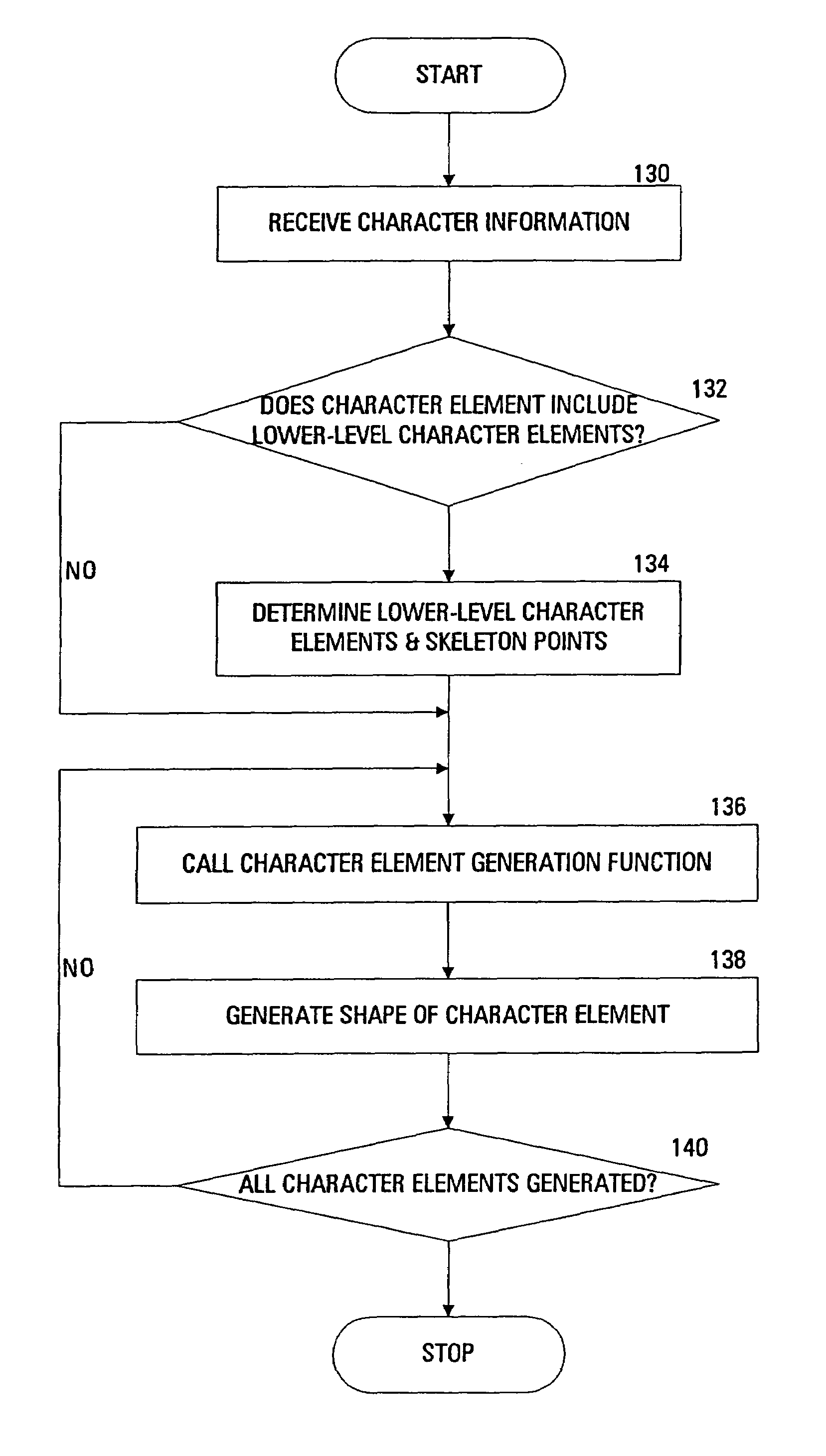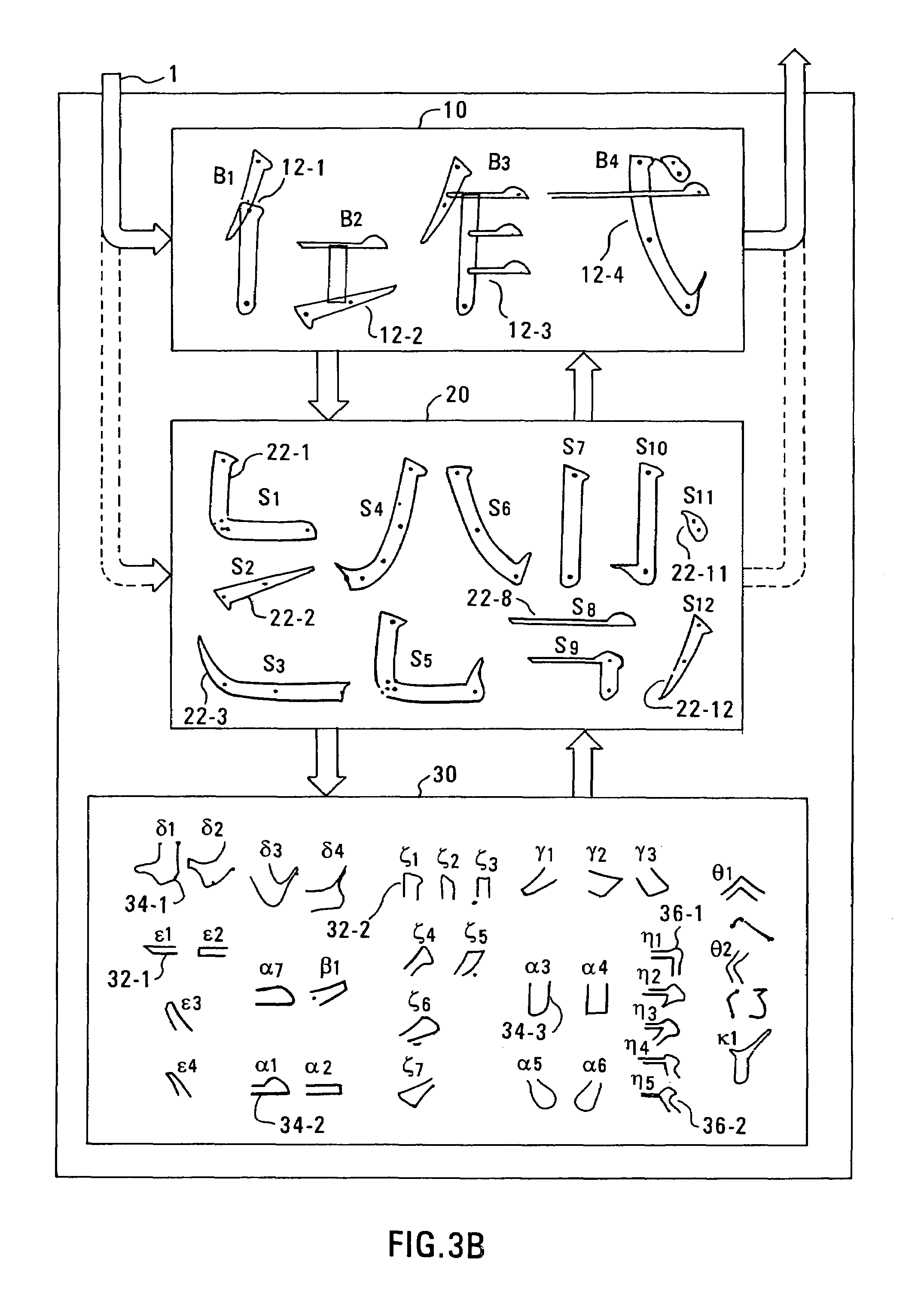Method for generating fonts from very small data sets
a data set and small technology, applied in the field of character generation method, can solve the problems of large number of data to handle many methods, difficulty in enlarging, reducing, and transforming bitmaps, and inefficient bitmaps in memory or transmission bandwidth requirements
- Summary
- Abstract
- Description
- Claims
- Application Information
AI Technical Summary
Benefits of technology
Problems solved by technology
Method used
Image
Examples
Embodiment Construction
[0035]The invention is based on the inventor's discovery that characters that constitute character sets such as fonts can be built from character elements arranged in a hierarchical structure. Although the characters that constitute a character set are all different, many of the characters share common character elements. Moreover, although the character elements from which the characters constituting the character set are built are all different, many of the character elements share common lower-level character elements. For example, in certain fonts, the lower-case Roman letters h, k and l share a common character element, namely, the vertical stroke that constitutes the letter l. Moreover, in certain fonts, the serif at the top of the vertical stroke of the letters b, h, k and l also forms part of the vertical stroke forming part of the letters d, i, j, m, n, p and r.
[0036]Therefore, by regarding the characters constituting the character set as respective sets of character elemen...
PUM
 Login to View More
Login to View More Abstract
Description
Claims
Application Information
 Login to View More
Login to View More - R&D
- Intellectual Property
- Life Sciences
- Materials
- Tech Scout
- Unparalleled Data Quality
- Higher Quality Content
- 60% Fewer Hallucinations
Browse by: Latest US Patents, China's latest patents, Technical Efficacy Thesaurus, Application Domain, Technology Topic, Popular Technical Reports.
© 2025 PatSnap. All rights reserved.Legal|Privacy policy|Modern Slavery Act Transparency Statement|Sitemap|About US| Contact US: help@patsnap.com



